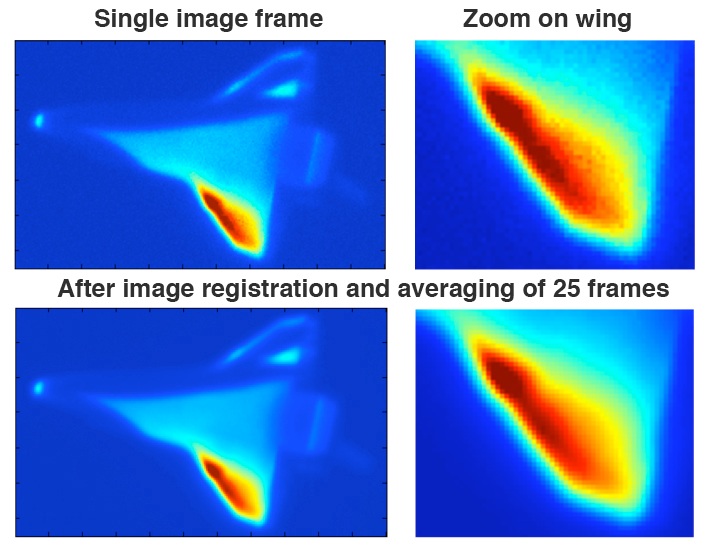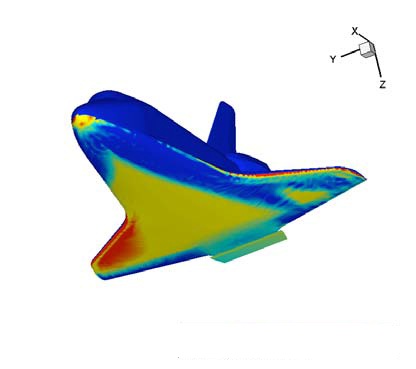In-flight infrared data can be incredibly useful, as they can be used to analyze thermal qualities of a target. However, in their raw form, these data are relative; they are great for showing a global heating pattern but cannot indicate the actual temperature of an object. Customers can request image processing as an extra service in order to obtain temperature information from infrared data. SCIFLI has expertise in image processing, as the team has used it since their early observations of the space shuttle.
The process begins far in advance of the actual mission. The team runs careful calibrations on the optical equipment, using exactly the same configuration that will be used in the observation. By measuring precise temperatures of objects and imaging them, the team can test how the optical system’s sensor counts will translate to real-world temperatures.
Once the data are collected, the team can review the footage and focus on the timestamp that is most valuable to the customer. Be examining several frames before and after that timestamp and averaging them, the quality is improved and excess noise is reduced.

After the observation, SCIFLI can use the calibration data to convert thermal maps into temperature data. Emissivity curves, which illustrate the varying emissivity caused by material and imaging angle, allow the team to account for these complicating factors. SCIFLI must also compensate for atmospheric scattering and absorption, as the imaging systems are a significant distance from the target. Details such as humidity and particle counts are examined to estimate the degree of light scattering.
SCIFLI’s predecessor, HYTHIRM, regularly performed this kind of analysis on their observations of shuttle missions. With the help of John Hopkins University, these thermal maps were then translated onto a 3D model with pixel-by-pixel precision in order to compare the real flight data with 3D simulations of reentry conditions. Similar analysis is expected for some of SCIFLI’s future missions, including Sierra Space’s Dream Chaser and SpaceX’s Starship.

